24 Classic Italian Fried Desserts for Sweet Moments
Italian fried desserts tempt food lovers with their golden, crispy exteriors and sweet, pillowy interiors that melt delightfully on your tongue.
Every culture celebrates comfort through deep-fried delicacies, but Italian cuisine elevates these treats to an art form.
Generations of passionate cooks have perfected techniques passed down through family kitchens, transforming simple ingredients into magical culinary experiences.
Rich traditions blend with innovative recipes, creating textures that crunch beautifully and flavors that dance between familiar and surprising.
Mediterranean ingredients like fresh ricotta, fragrant citrus, and smooth chocolate transform ordinary pastries into extraordinary sensations.
Regional variations showcase local creativity, demonstrating how deeply food connects communities and celebrates cultural heritage.
Each bite tells a story of craftsmanship, love, and generations of culinary wisdom.
Uncover the delectable world of 24 mouthwatering Italian fried desserts:
Delicious Italian Fried Desserts for Sweet Indulgence
Italian pastry chefs fry up golden, irresistible treats, dusted with sugar, stuffed with sweet ricotta, or drizzled with honey. Perfect for celebrations or an afternoon pick-me-up.
Bomboloni
Bomboloni are classic Italian deep-fried doughnuts bursting with sweet, creamy fillings that originated in Tuscany but now delight people nationwide.
Soft, golden-brown pastries arrive fresh from bakeries with sugar-coated exteriors that crackle when bitten.
Northern Italian versions feature simple sugar coating, while Lazio regions stuff these treats with rich custard or chocolate cream.
Regional variations showcase the pastry's versatility across different Italian provinces.
Traditional carnival season initially popularized these round doughnuts, though bakeries now serve them year-round.
Crispy exterior and smooth interior create a perfect texture contrast that makes bomboloni irresistible.
Passionate bakers carefully craft each pastry to ensure maximum flavor and texture.
Sweet, pillowy doughnuts remain a beloved Italian street food snack enjoyed by locals and tourists.
Graffe Napoletane
Graffe are iconic Neapolitan fried pastries with Austrian roots that define carnival culinary traditions in Southern Italy.
Potato-enriched dough gives these fritters an extraordinary soft texture and distinctive round shape with a center hole.
Bakers carefully mix mashed potatoes into the yeasted dough to ensure maximum tenderness and lightness.
Traditional preparation involves deep-frying the dough until golden brown and crispy exterior develops.
After frying, bakers generously coat the warm graffe in granulated sugar for added sweetness.
Austrian krapfen originally inspired these carnival treats that have become a beloved Italian street food.
Sweet and fluffy, graffe are best consumed immediately after cooking while still warm and crisp.
Castagnole
Castagnole are miniature Italian carnival treats shaped like chestnuts and deep-fried to golden perfection.
These sweet dough balls boast a crispy exterior that gives way to an incredibly soft, pillowy interior.
Originating from Italian carnival celebrations, castagnole can be prepared through frying or baking methods.
Traditional variations include fillings of cream, chocolate, ricotta, or coffee for added richness.
Their compact chestnut-like shape comes from the Italian word "castagne," which directly references chestnuts.
Powdered sugar coating provides a classic finishing touch that enhances their sweetness.
Warm serving temperature maximizes their delectable texture and flavor.
Carnival season brings these irresistible treats to tables across Italy, delighting both children and adults with their simple yet satisfying taste.
Zeppole
Zeppole are irresistible Italian fried dough pastries originating from southern Italy, deeply rooted in cultural traditions and culinary history.
Ancient Roman influences shaped these golden treats, which gained popularity in 18th-century Campania through baker Pasquale Pintauro.
Religious celebrations, especially Saint Joseph's feast on March 19, traditionally highlight zeppole's significance in Italian communities.
Deep-fried and dusted with powdered sugar, these pastries can be filled with creamy custard, sweet jelly, or rich pastry cream.
Honey and butter variations add another layer of indulgence to the classic recipe.
Arabic linguistic roots connect the name "zeppole" to the word zalabiyya, meaning soft fried dough.
Neapolitan bakers perfected the recipe, transforming a simple street food into a beloved national delicacy.
Chiacchiere (Campania)
Chiacchiere are crispy, golden-brown Italian Carnival pastries dusted with powdered sugar, symbolizing festive indulgence across multiple Italian regions.
These delicate fried treats boast regional variations with names like frappe, sfrappole, and crostoli, reflecting local culinary diversity.
Originating from a Neapolitan legend involving Queen Margherita of Savoy, they were reportedly created by court chef Raffaele Esposito during a social gathering.
Simple ingredients including flour, sugar, eggs, and butter form their basic composition.
Regional cooks craft them by rolling thin dough, cutting into decorative shapes, and quickly deep-frying until perfectly golden.
Their light, crispy texture makes them an irresistible treat enjoyed during festive winter gatherings.
Seada
Sebadas are golden deep-fried Sardinian pastries originating from shepherds' resourceful cuisine, featuring a crisp wheat or semolina dough encasing creamy young Pecorino Sardo cheese.
Traditional preparation involves round pastry shells carefully stuffed with soft cheese and expertly fried until achieving a beautiful golden-brown exterior.
Mountain shepherds initially crafted these pastries as a savory meal, transforming them over generations into a beloved sweet dessert.
Sardinian cooks drizzle the hot pastries with distinctive local honey, typically the slightly bitter miele amaro variety.
Honey and a light sugar dusting complete the pastry's final presentation, creating a perfect balance between crispy texture and sweet-savory flavor.
Each sebada offers a delightful contrast between its crunchy exterior and smooth cheese interior.
Regional ingredients and traditional cooking methods define this unique Sardinian treat.
Authentic sebadas reflect generations of culinary innovation born from pastoral necessity.
Chiacchiere
Chiacchiere are crispy Italian carnival pastry fritters crafted from thin dough sheets twisted into delicate ribbons or wavy shapes and deep-fried until golden.
Regional variations across Italy determine their specific alcohol ingredient, with Sicily using Marsala and northern regions preferring grappa.
Locals often call them angel wings because of their unique winged appearance.
Sweet powdered sugar typically dusts the top of these festive treats.
Salt and white wine form part of their traditional dough mixture.
Home bakers carefully cut rectangular dough pieces to create their signature shape.
Carnival celebrations welcome these light, crunchy pastries as a beloved seasonal dessert.
These fritters symbolize Italy's rich culinary diversity and festive food traditions.
Struffoli
Struffoli are sweet, honey-drenched dough balls from Naples that symbolize abundance and prosperity during Christmas celebrations.
Greek origins trace the name from "strongulos," meaning round, which perfectly describes these tiny golden spheres.
Deep-fried until crispy, the small dough balls get completely coated in warm honey, creating an irresistible sticky-sweet texture.
Neapolitan nuns traditionally prepared these treats for noble families as a gesture of gratitude for their charitable donations.
Colorful candy sprinkles or candied fruit often decorate the dessert, which is typically arranged in a wreath or Christmas tree shape.
Cassatelle
Cassatelle are crispy Sicilian pastries bursting with sweet ricotta fillings that transform simple dough into an irresistible dessert experience.
Originating in Trapani province, these deep-fried treats feature two thin dough layers carefully encasing creamy, lemon-infused ricotta mixed with chocolate drops.
Traditional recipes showcase the classic version, while regional variations include cocoa-almond, pumpkin, fig, and chickpea fillings.
Marsala wine or white wine enriches the dough, creating a delicate texture that complements the rich interior.
Sicilian bakers craft these pastries with generations of culinary wisdom, ensuring each bite connects you to authentic island flavors.
Street vendors and home kitchens alike celebrate cassatelle as a beloved dessert that represents Sicily's passionate food culture.
Travelers and locals equally enjoy these golden, crisp pastries as a perfect sweet indulgence.
Italian pastry-making techniques shine through in every carefully prepared cassatelle.
Tortelli Dolci
Tortelli dolci are irresistible Italian carnival pastries featuring crispy exteriors and luscious sweet fillings from multiple regions.
Regional variations highlight different stuffings like rich plum jam, creamy ricotta, decadent chocolate, or smooth chestnut cream.
Bakers traditionally deep-fry these treats until golden brown, creating a crunchy exterior that contrasts with their soft inner layers.
Some regions prefer baking these pastries for a lighter texture and reduced oil content.
Powdered sugar generously coats the surface, adding a sweet finishing touch to these festive desserts.
Italians prepare tortelli dolci during carnival season as celebratory sweets enjoyed by families and friends.
Carnival celebrations across Italy showcase these delightful pastries as a beloved seasonal tradition.
Warm or cold, tortelli dolci offer a delicious taste of Italian culinary heritage.
Donzelle
Donzelle are crispy Italian bread puffs deep-fried to golden perfection, originating from traditional Italian cuisine as a versatile appetizer or snack.
Regional bakers craft these light, airy bread morsels using fresh or leftover pizza dough, transforming simple ingredients into a beloved street food.
Salt-sprinkled and served piping hot, donzelle pair wonderfully with cured meats like salami and soft Italian cheeses.
Restaurants and home kitchens across Italy prepare these bite-sized treats as part of antipasto spreads or casual gatherings.
Small bakeries often sell donzelle fresh from the fryer, creating an irresistible aroma that draws hungry customers.
Crisp on the outside and soft inside, these bread puffs showcase the simplicity of Italian cooking techniques.
Donzelle can be enjoyed as a standalone snack or accompaniment to various dishes.
Street vendors and family kitchens alike continue this delicious culinary tradition throughout Italy.
Crema Fritta
Olive all'ascolana are savory stuffed olives originating from Italy's Marche region, carefully coated in crispy breadcrumbs and deep-fried to golden perfection.
Traditionally prepared with green Ascolane olives, these bite-sized appetizers feature a rich filling of ground meats like beef, pork, and sometimes chicken, carefully mixed with Parmesan cheese and aromatic herbs.
Regional variations include different meat combinations and preparation techniques, making each batch unique to its local tradition.
Olive all'ascolana frequently appear on antipasto platters during festive celebrations and family gatherings across central Italy.
Restaurants and home cooks take pride in their specific recipes, often passing down techniques through generations.
Italian food lovers consider these crispy olives a classic example of transforming simple ingredients into an extraordinary culinary experience.
These golden-brown morsels pair wonderfully with white wine or sparkling aperitifs, creating a perfect start to any meal.
Latte Dolce Fritto
Latte dolce fritto captivates Italian dessert lovers with its crispy exterior and molten custard center, transforming simple milk into a golden-brown Ligurian street snack.
Originating from Italy's coastal Liguria region, this treat begins by creating a rich custard mixed with flour, cornstarch, and eggs.
Chefs carefully set the custard until firm, then methodically cut it into precise cubes.
Breadcrumbs provide a crunchy coating that protects the creamy interior during frying.
Hot oil turns these small cubes into crisp, golden morsels with a surprising soft center.
Each bite releases warm, silky custard through its crackling shell.
Traditional preparation requires careful temperature control to achieve perfect texture.
Street vendors and home cooks alike treasure this simple yet sophisticated dessert as a beloved regional specialty.
Iris (Sicily)
Iris are decadent Sicilian pastries bursting with creamy ricotta and encased in golden-brown fried dough.
Sweet ricotta mixed with sugar fills the soft, pillowy spheres crafted from a rich yeasted dough blend of flour, milk, eggs, and butter.
Originating in Palermo, these deep-fried treats offer a crispy exterior that gives way to a luscious, smooth center.
Street vendors and bakeries across Sicily sell these popular desserts as quick snacks or after-meal sweets.
Sicilian bakers carefully craft each iris by hand, ensuring a perfect balance of textures and flavors.
Regional variations might include small additions like chocolate chips or cinnamon.
Powdered sugar often dusts the surface, adding a final touch of sweetness.
Sfinci Di San Giuseppe
Sfinci are authentic Sicilian pastries deep-fried to golden perfection with a crispy exterior and pillowy soft interior.
Originating from traditional Saint Joseph's Day celebrations on March 19th, these doughnuts showcase Sicily's rich culinary heritage.
Sicilians create sfinci by mixing flour, eggs, and ricotta cheese into a light batter that becomes airy when fried.
Street vendors and home bakers coat the pastries in powdered sugar or fill them with sweet ricotta cream.
Modern variations include savory versions with cheese and herbs.
Holiday traditions still honor the original recipe, with families gathering to prepare sfinci during festive seasons.
Today, sfinci remain popular year-round as a beloved street food and festive treat across Sicily.
Arancini Al Cioccolato
Arancini con cioccolato are decadent Sicilian rice balls bursting with rich chocolate flavors that transform simple ingredients into an extraordinary dessert.
Sicilian street food culture celebrates this sweet variation of traditional savory arancini, featuring crispy golden-brown exteriors with molten chocolate centers.
Dark chocolate blends seamlessly with sugar, vanilla, butter, cinnamon, and grated lemon zest to create an intense filling.
Skilled cooks carefully roll risotto rice into compact spheres before coating them in breadcrumbs.
Deep-frying ensures a crunchy exterior that contrasts beautifully with the smooth, warm chocolate interior.
Sicily's culinary heritage shines through this innovative street snack that balances sweet and textural elements.
Regional ingredients and cooking techniques make each arancini unique to its maker.
Mediterranean influences shine through this beloved Sicilian treat that continues to delight locals and visitors.
Chifelini
Chifelini are traditional Italian potato fritters bursting with rustic charm from Trieste's culinary landscape, featuring a simple yet transformative blend of boiled potatoes, flour, eggs, and butter.
Versatile fritters emerge in both savory and sweet variations, offering regional flexibility across Friuli-Venezia Giulia and Trentino-Alto Adige.
Soft potato mixtures transform into elongated crescents or logs, carefully shaped by hand before plunging into sizzling hot oil.
Golden-brown edges signal perfect frying, creating crisp exteriors with tender interiors.
Sweet versions receive a delicate dusting of powdered sugar or cinnamon, while savory editions get a light sprinkle of salt.
Regional families pass down generations-old techniques for crafting these beloved potato treats.
Street vendors and home kitchens alike celebrate these compact, satisfying fritters.
Mediterranean comfort shines through in every crispy, potato-rich bite.
Crispelle
Crispelle are irresistible Italian deep-fried dough pastries originating from southern Italy's rich culinary traditions.
Southern Italian regions craft these versatile treats using bread or pizza dough that transforms into crispy golden delights when submerged in hot oil.
Regional variations allow cooks to create sweet or savory versions with diverse fillings like sheep ricotta, anchovies, salted cod, sardines, broccoli, and potatoes.
Skilled bakers shape crispelle into long strips, rings, or round balls during preparation.
Sweet versions often feature simple powdered sugar coatings or raisins mixed into the dough.
Honey drizzles provide an additional sweet option for those craving a sugary finish.
Mediterranean flavors and frying techniques make crispelle a beloved street food and festive snack.
Each bite delivers a crisp exterior with a soft, warm interior that celebrates Italy's culinary creativity.
Pignoccata
Pignoccata are sweet Sicily-born pastry clusters bursting with festive flavors and traditional charm.
Small pieces of golden fried dough transform into delicate honey-soaked bites that glisten with sugary appeal.
Carnival and Christmas celebrations welcome these irresistible treats as centerpiece desserts for family gatherings.
Hot caramelized honey coats each crispy morsel, creating a glossy, sticky texture that mesmerizes dessert lovers.
Colorful sugar confetti and chopped pine nuts or almonds add visual drama and delightful crunch to the final presentation.
Regional bakers carefully craft these bite-sized morsels using simple ingredients like flour, eggs, and honey.
Each cluster rises into a beautiful mound that showcases Sicily's rich culinary heritage.
Generations have savored this sweet delicacy as a cherished seasonal indulgence.
Bacio Di Pantelleria
Bacio di Pantelleria represents a delicate Sicilian dessert featuring golden crispy fritters filled with creamy ricotta and chocolate.
Distinctive flower-shaped molds create intricate pastry designs by dipping batter made from eggs, milk, flour, and sugar into hot oil.
Traditional preparation involves carefully crafting light, crisp shells with decorative edges and intricate patterns.
Skilled island bakers glue two fritters together using whipped ricotta and chocolate chips for a rich, sweet center.
Innovative bakers sometimes enhance the batter with cocoa, coffee, or liqueurs for additional complexity.
Regional variations include adding candied fruit to the filling for extra texture and flavor.
Small variations reflect Pantelleria's culinary creativity and dedication to dessert craftsmanship.
Sweet, crisp fritters showcase Sicily's passion for transforming simple ingredients into extraordinary treats.
Frittelle Di Riso Di San Giuseppe
Frittelle di riso are sweet Tuscan rice fritters traditionally prepared for Saint Joseph's feast day, featuring a crispy exterior and soft, custardy interior packed with rich flavors.
Rice pudding forms the base of these delicate treats, combining short-grain rice, sugar, milk, and lemon peel into a creamy mixture.
Amaretto, brandy, or sherry adds depth to the batter, enhancing its complex taste profile.
Egg yolks and flour provide structure and richness to the fritters.
Whisked egg whites create a light, airy texture when folded into the mixture.
Hot oil transforms the batter into golden-brown, crisp morsels that crackle with each bite.
Italian families often gather to make these special fritters during festive celebrations.
Street vendors and bakeries across Tuscany serve these beloved sweet treats during springtime festivals.
Orecchie Di Amman
Orecchie di Amman are classic Italian-Jewish sweet pastries shaped like ears to symbolize Haman's punishment during Purim celebrations.
Jewish families craft these triangular treats with a rich dough blending eggs, sugar, white wine, olive oil, and citrus zest.
Bakers carefully fold the pastry into distinctive ear-like shapes that represent historical resilience against persecution.
Sweet fillings like chocolate, jam, or poppy seed often nestle inside the crisp pastry layers.
Religious traditions connect these pastries directly to commemorating Jewish survival during ancient Persian events.
Purim festivities welcome these symbolic sweets as a delicious reminder of community strength.
Festival guests enjoy the pastries as both a culinary delight and a historical narrative.
Small yet meaningful, these pastries carry generations of cultural memory through their simple yet powerful design.
Baci Di Pantelleria
Baci di Pantelleria are signature Italian island pastries featuring delicate flower-shaped fritters crafted through intricate frying techniques using specialized iron molds.
Sweet ricotta and crema pasticcera create a luxurious filling that gets sandwiched between crispy golden layers.
Chocolate drops enhance the pastry's rich flavor profile.
Small amounts of filling connect two fritters, forming a beautiful sandwich-style dessert.
Originating from Pantelleria, an island near Sicily, these treats showcase traditional Italian confectionery skills.
Mediterranean ingredients and precise cooking methods define their unique texture.
Locals prepare these fritters during special celebrations and family gatherings.
Tourists and residents alike enjoy these elegant, light pastries as a memorable culinary experience.
Zeppola Di Riso
Zeppole di riso are crispy orange-honey pastries originating from Catania with a creamy rice-based interior that melts in your mouth.
Benedictine nuns first crafted these deep-fried sweets during the 16th century, giving them their alternate name "benedettine".
Rice cooked in milk forms the delicate base of these golden treats.
Sicilian bakers carefully fry the dough to create a perfectly crunchy exterior.
Each zeppola combines sweet honey and fragrant orange notes for a complex flavor profile.
Traditional recipes pass through generations of Italian families.
Street vendors and bakeries across Sicily sell these irresistible rice puffs.
Regional celebrations often feature zeppole di riso as a beloved dessert centerpiece.
How Do Italian Fried Desserts Compare to French or Spanish Ones?
Italian fried desserts share similarities with their French and Spanish counterparts but also feature unique characteristics that set them apart:
While all three cuisines enjoy sweet fried treats, Italians tend toward lighter batters and subtle flavorings, French desserts often showcase creamy fillings and rich accompaniments, and Spanish sweets emphasize bold, sweet spices and dipping sauces.




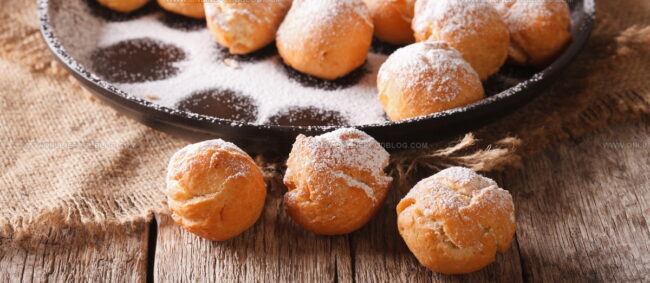
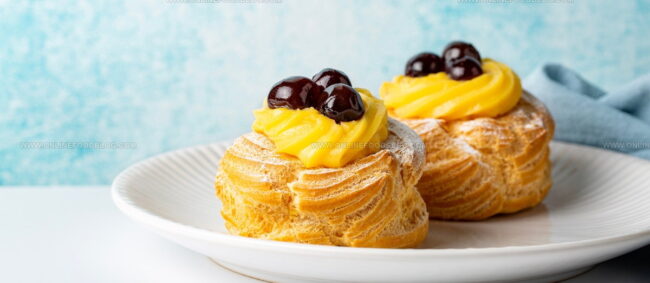
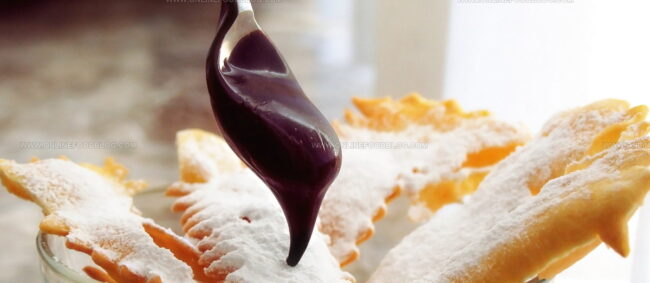
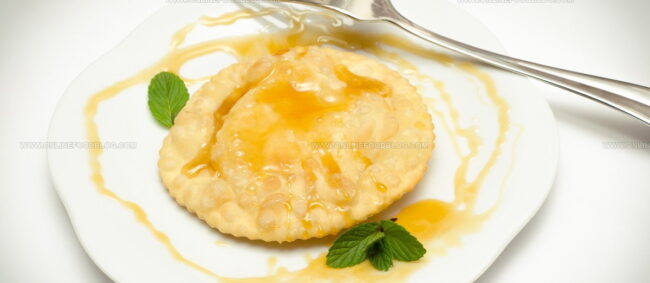
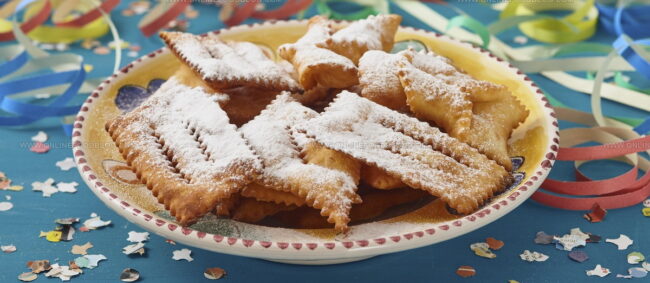
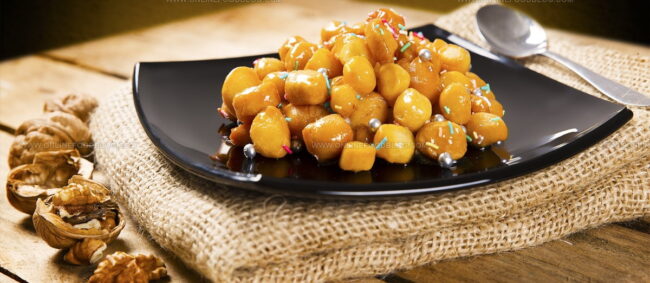
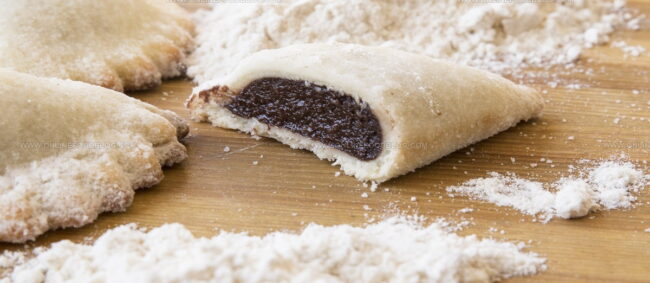

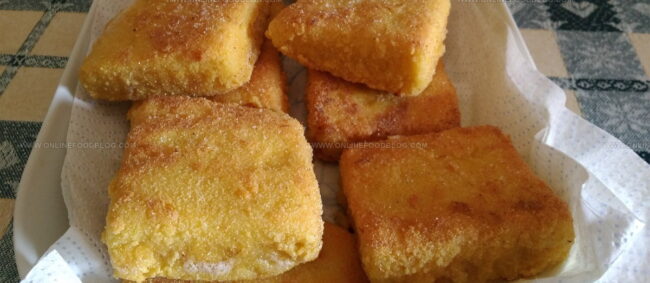
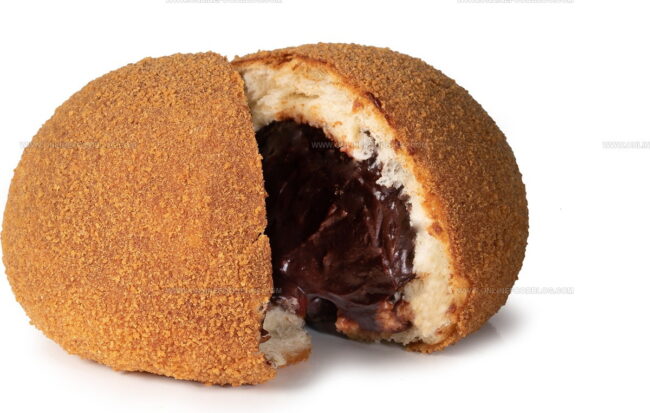
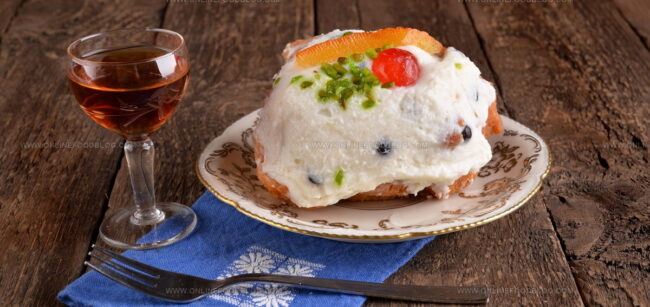
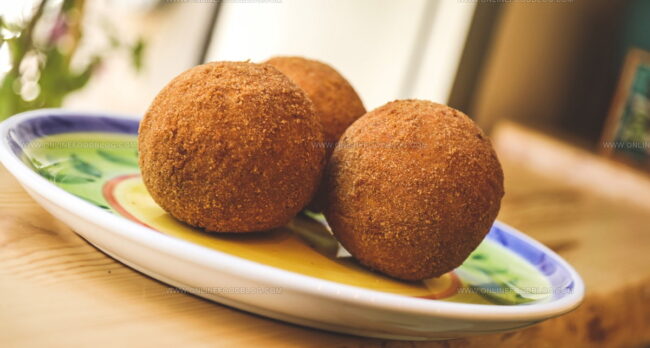
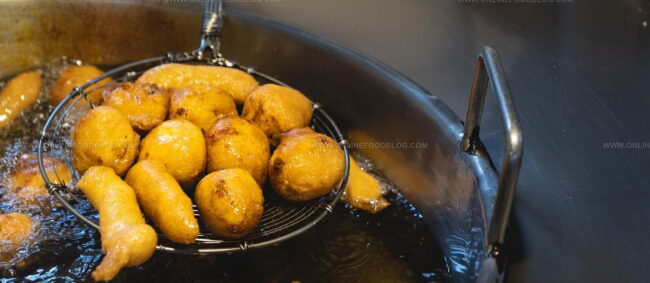
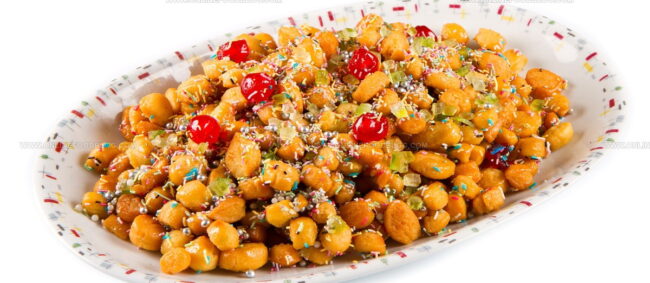
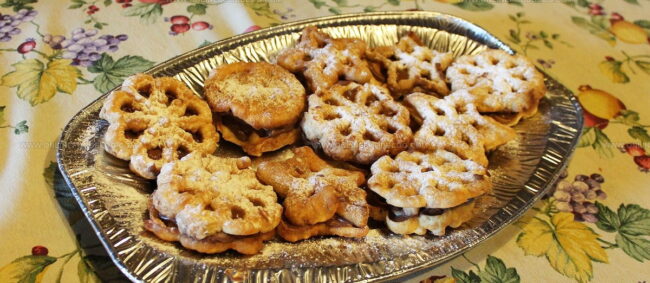
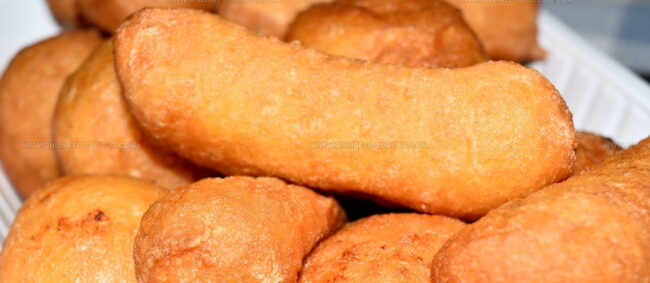
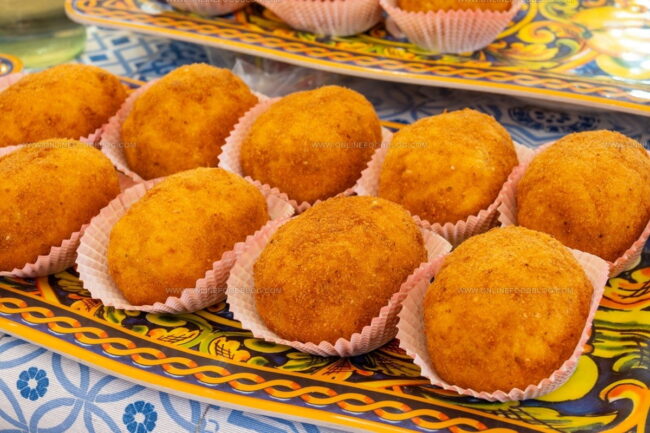
Lucas Bennett
Founder & Recipe Creator
Expertise
Simple Everyday Recipes, Sustainable Cooking Practices, Creative Meal Planning, Recipe Testing and Improvement
Education
Fox Valley Technical College, Appleton, Wisconsin
Lake Superior College, Duluth, Minnesota
Lucas Bennett’s cooking journey started in his parents’ kitchen, where he learned to prepare tasty, no-fuss meals from scratch. His culinary passion led him to Fox Valley Technical College, where he gained practical cooking skills.
He then expanded his focus on sustainability at Lake Superior College. Today, Lucas shares easy, approachable recipes designed to make cooking enjoyable and stress-free for everyone.